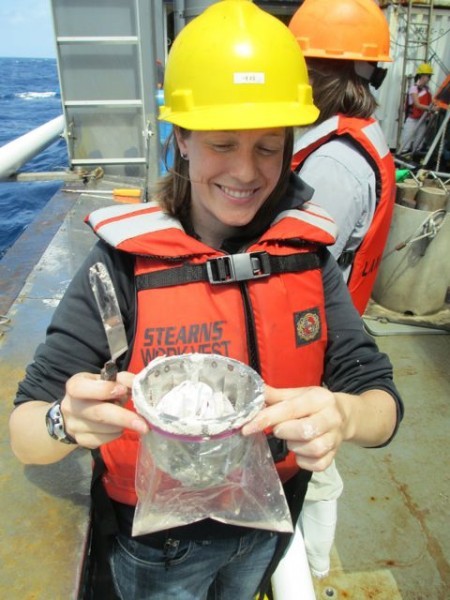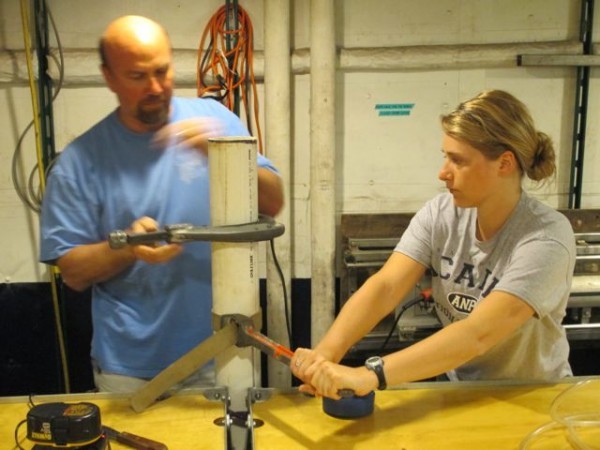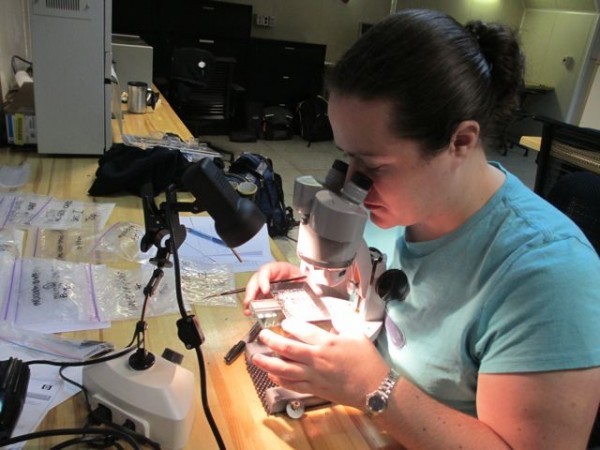Drilling Ancient Mud from Seafloor No Easy Task
Yesterday we left our first study region with new samples from the seafloor and a healthy respect for the ocean currents that can erode sediment deep in the ocean. The seafloor we surveyed was heavily eroded and we had to look carefully before finding sites that were promising enough to try sampling. Even then we ran into difficulties getting the sediments back to the ship.
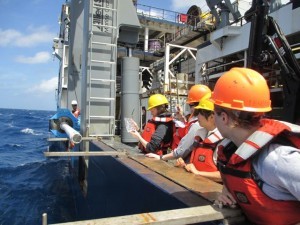
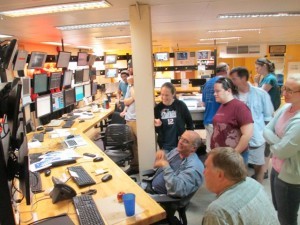
Yesterday we left our first study region with new samples from the seafloor and a healthy respect for the ocean currents that can erode sediment deep in the ocean. The samples will be useful for our research but we had to work for them. The seafloor we surveyed was heavily eroded and we had to look carefully before finding sites that were promising enough to sample. Even then we ran into difficulties getting the sediments back to the ship.
We spent several days surveying the seafloor using instruments on the ship to identify possible sites for sampling. We looked for flat areas where we could see layers of sediment below the seafloor. These layers show up in the echoes from sound pulses in a type of measurement called seismic reflection (see previous blog post). Unfortunately much of the region we surveyed has deep gullies with no sediment layers. Ocean currents have scoured these regions leaving no sediment for us to core. We finally located several small areas that had a hint of sediments and one big pile of sediment we thought would be our best chance for samples.
We use a sediment corer to take samples of the seafloor. The corer is a long tube with heavy weights on top that push the tube down into the seafloor. When the tube is pulled out it removes a long cylinder of sediment that we bring back to the surface. The corer is lowered on a steel cable at about 1.5 miles per hour and takes more than an hour to reach the seafloor. At 150 feet above the seafloor, a mechanical trigger releases the corer from the cable and 5,000 pounds of steel rocket towards the bottom. The weight and speed push the corer up to 30 feet into the sediments. Then we have to pull the corer back out. Sometimes this is easy but if the sediments stick to the corer it can take almost 20,000 pounds of pull to free the tube and slide it out.

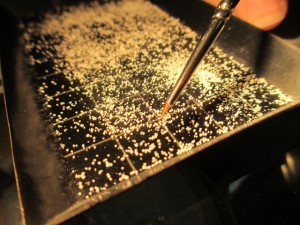
The other important step in coring is to keep the sediments inside the tube on their two-mile trip back to the surface. This seems obvious but we ran into troubles with the very first core we took. Usually a ring of metal fingers in the bottom of the core (called a core catcher) keeps the sediment inside the tube. However, the sediment we were coring contained a lot of sand-sized shells that was washing out of the tube leaving us with no sediment by the time the corer reached the surface. To prevent this, we added a sock of fabric around the core catcher to keep the sand from washing out. Bingo! The fabric kept the sand in the corer and we started recovering sediments to study.
When the sediment corer arrives at the ocean surface it is laid horizontally along the ship’s rail where we take a sample of the sediment in the core catcher to determine the age of the bottom of the core. This age is determined by looking for a striking, pink colored shell made by a type of plankton called foraminifera. This pink foraminifera was abundant in the Pacific Ocean until 120,000 years ago, so if we find pink shells we know the sediments are at least 120,000 years old. We will do more detailed analyses later but this age gives us our first peek at how much time it took for the sediments to accumulate.
Next, we cut the core into smaller sections that are easier to handle and the core is split open so we can see how the sediment looks. We study its color, texture and composition before storing it in a refrigerated container aboard the ship. At the end of the cruise we will send the container to the Deep-Sea Core Repository at Lamont-Doherty Earth Observatory where the sediments will be preserved for researchers around the world to study.
We are now steaming south to the equator to start a new survey to find the right locations to drill more sediment cores.
